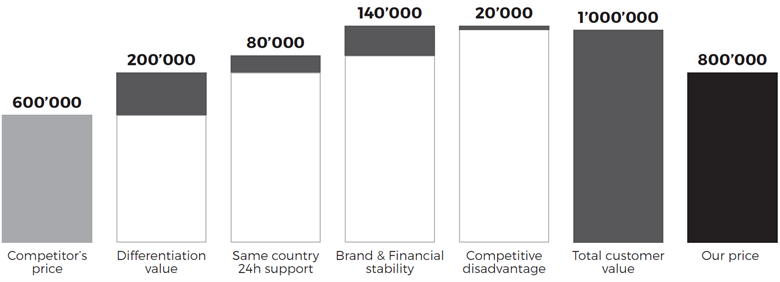Aggressive competitors undercut other companies all the time, and lowering price may often seem the obvious choice. The fear of losing revenue is usually the only reason behind this rationale and a lower price is the easiest thing to do, but the reality is more complex than this: opportunity cost, margin, asymmetric information, etc., are all things to be considered.
Hinterhuber & Partners decided to approach the issue differently, through value quantification, and discussed internally with engineers, product-specialists and marketing managers about the importance of given features embedded in the product and ancillary benefits that it could provide, such as superior support, or financial solidity.
If one is able to study itself against the competition, many insights come out: one may have unique selling propositions that are valued by the customer and surpass any price difference. This is exactly what happened: our client was able to identify and calculate with us the value of features that affect the most a business relying on 24/7 transactions, such as a 1% higher up-time than competitors, or a faster response time in case of problems, or using only servers located in the EU. A Financial Institution missing just a few transactions, or not being able to solve a technical problem quickly, might lose tens of thousands of euros in refunds, employees time on top of the risk of losing brand equity, in a matter of hours.
These advantages, translated into lower costs, lower risks, and higher performance, proved that the price premium with respect to the Asian competitor, was nothing more than a small investment that would pay for itself. Our client used the H&P proprietary Value Quantification Tool® to undertake the calculation as shown below:

